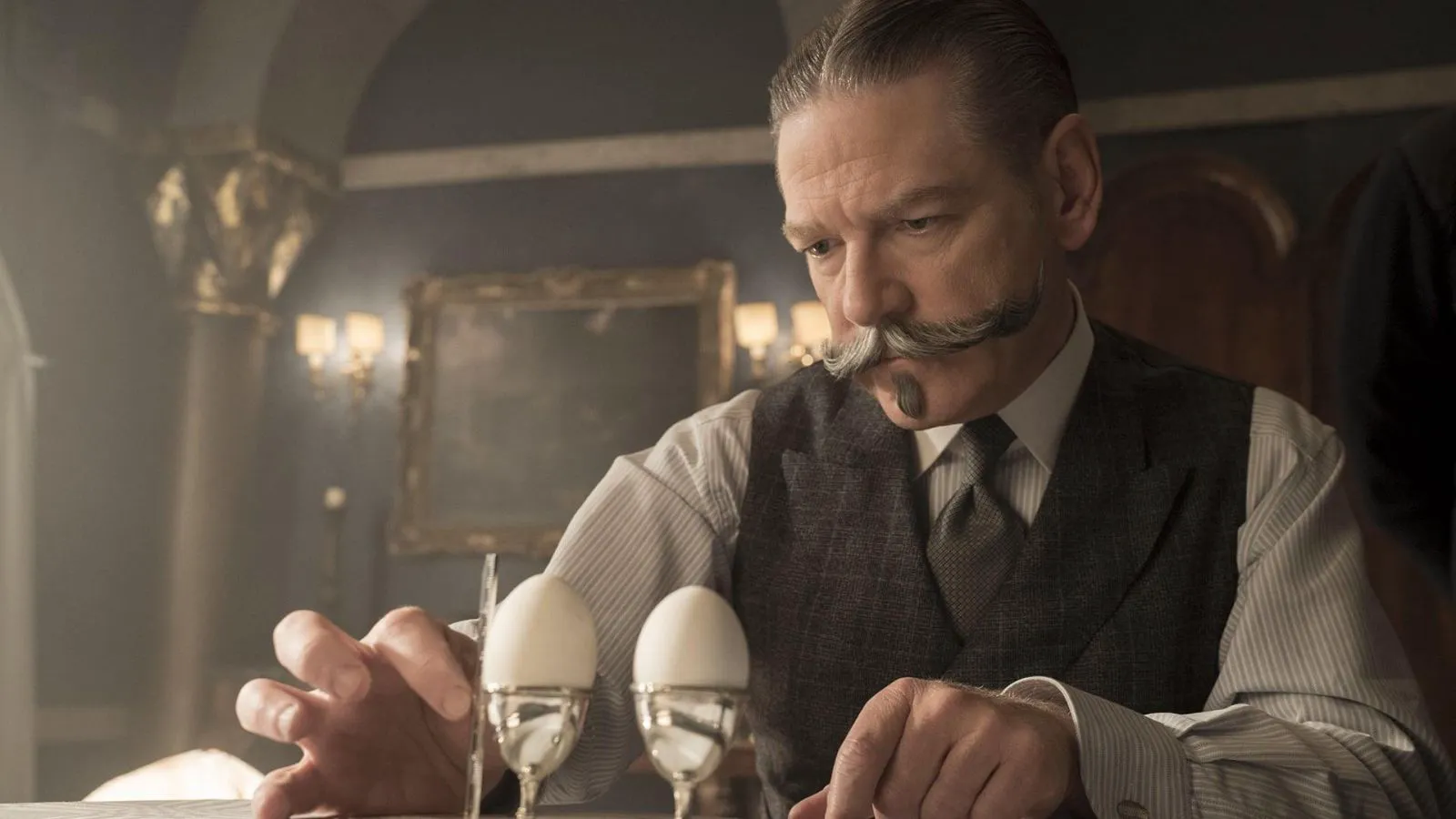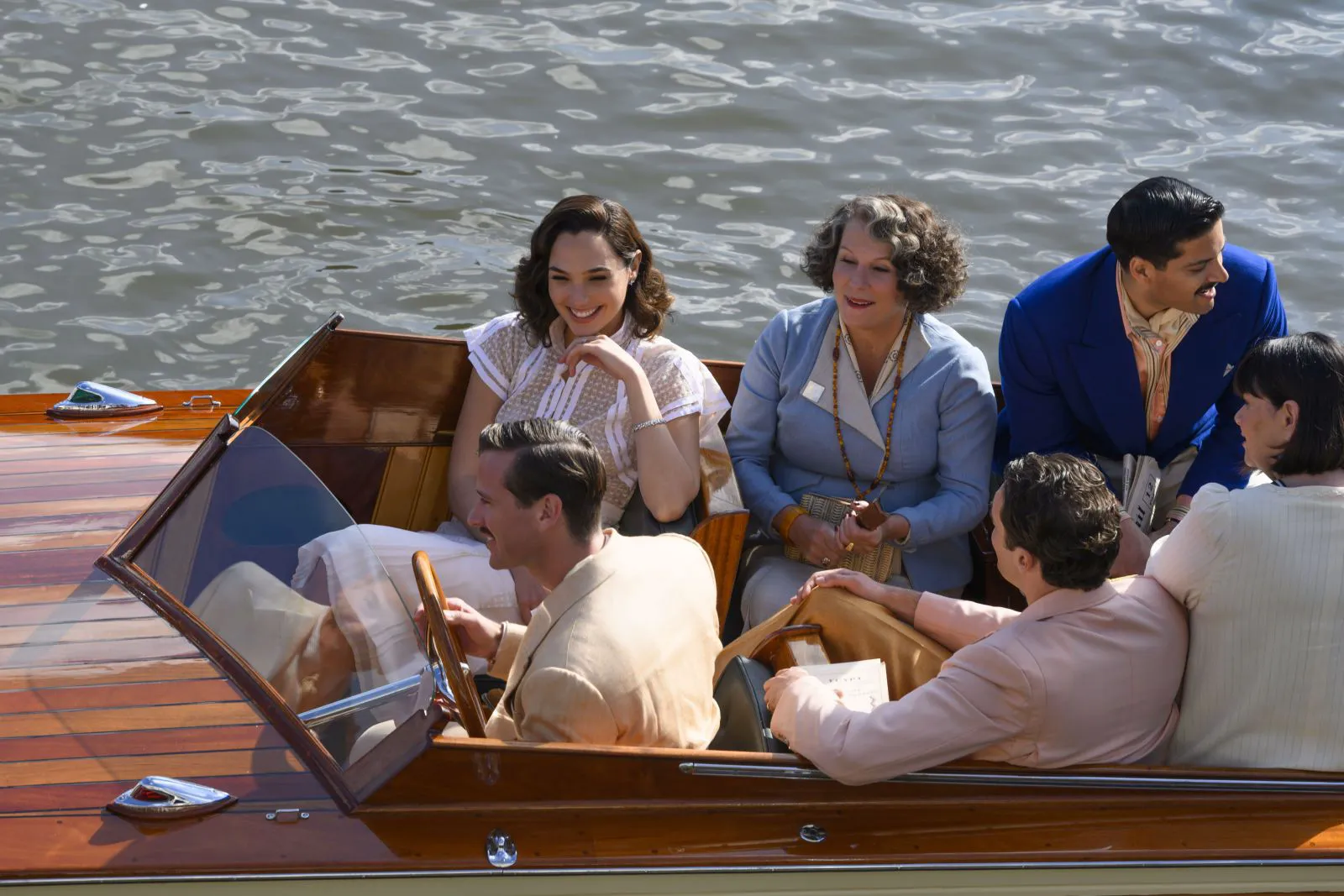Kenneth Branagh’s “Death on the Nile”: A Step Forward or a Stumble?
In 2021, Kenneth Branagh took a break from studio filmmaking to direct the autobiographical “Belfast,” a film now vying for an Oscar and currently considered a frontrunner after “The Power of the Dog.” However, even before that, Branagh helmed “Death on the Nile,” his second cinematic venture featuring the mustachioed detective Hercule Poirot. Due to pandemic-related delays and the Armie Hammer controversy, the film’s release was significantly delayed, making it feel like a step back for the acclaimed director. Yet, Branagh is no stranger to surprising us with contrasts, being the same person who can follow up a Shakespeare adaptation with a Marvel film like “Thor,” and who is simultaneously a respected figure in British theatre with a knighthood and the director of “Artemis Fowl.”

Gal Gadot as Linnet in “Death on the Nile”
Hercule Poirot (played by Kenneth Branagh himself), weary of high-profile cases, is vacationing near the Egyptian pyramids when he encounters his old friend Bouc (Tom Bateman). Bouc, traveling with his stern mother (Annette Bening), invites the detective to join them for a party celebrating the newlyweds Simon Doyle (Armie Hammer) and Linnet Ridgeway (Gal Gadot). The festivities are disrupted by an uninvited guest, Jackie (Emma Mackey), Linnet’s former friend and Simon’s ex-fiancée, who he jilted. Driven by jealousy, she relentlessly pursues the couple.
Seeking to escape Jackie’s constant presence, the newlyweds and their entourage embark on a river cruise along the Nile, inviting Poirot along to “keep an eye” on things. However, Jackie appears on the ship, and soon after, one of the passengers is murdered, with the most obvious suspect having an airtight alibi. The killer is undoubtedly on board, and only Hercule Poirot can uncover their identity.

Kenneth Branagh as Hercule Poirot in “Death on the Nile”
Branagh’s Poirot: A Focus on Ensemble Whodunits
The announcement of “Death on the Nile” made it clear that Branagh is particularly drawn to a specific type of Agatha Christie story featuring the Belgian detective: ensemble whodunits. These are self-contained mysteries where a group of diverse characters find themselves in a confined space, desperately trying to identify the killer among them, with each person potentially having a motive. Branagh’s choice is understandable. Firstly, Poirot has many such cases, allowing for continuous refinement of the formula. Secondly, these stories create a classic unity of time, place, and action, which resonates with Branagh’s theatrical background. In his hands, both a snowbound train and a Nile-bound ship become theatrical stages, a grand setting where renowned actors delve into intricate personal dramas. The director feels far more comfortable in this setting than in the fantastical world of “Artemis Fowl” or the Disney fairytale “Cinderella.”

Gal Gadot as Linnet in “Death on the Nile”
Mastering the Christie Formula
Over time, Branagh’s mastery of Christie’s text seems to be growing. “Murder on the Orient Express” was a decent adaptation, but felt somewhat unnecessary: a glossy retelling of a familiar story. “Death on the Nile” appears to follow a similar path, adhering closely to the original text without reinventing anything, and dazzling the viewer with one striking interior after another. However, the detective puzzle is assembled more elegantly here. Branagh works better with the details and isn’t afraid to be overly expressive, such as filming a character through distorted glass at a crucial moment and preceding each murder with a scene of animals devouring each other (although the latter might be excessive).
More importantly, Branagh truly captures the essence of his character only in this second film. In “Murder,” Poirot’s internal conflicts felt like unnecessary lyrical digressions against the backdrop of the detective intrigue. “Death on the Nile” is framed by the hero’s personal tragedy, having lost his love during the war and, both literally and metaphorically, hiding the scars of the past behind his mustache. Although the director strictly adheres to Christie’s text, the central plot of finding the killer seems to interest him less. Moreover, he provides attentive viewers with quite transparent hints early in the film. The focus of “Death on the Nile” is, paradoxically, on life. It’s about the story of a deeply traumatized and withdrawn Poirot, who makes mistakes, suffers setbacks, and ultimately learns to be human again. The truly Shakespearean passions and the out-of-style black-and-white opening in the spirit of “1917” only emphasize Branagh’s desire to break free from the stale aesthetic and delve deeper into the character. To discover who Hercule is and what pain lies behind his cold, calculating mind.